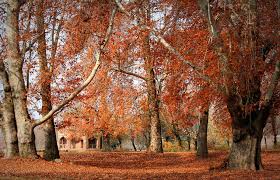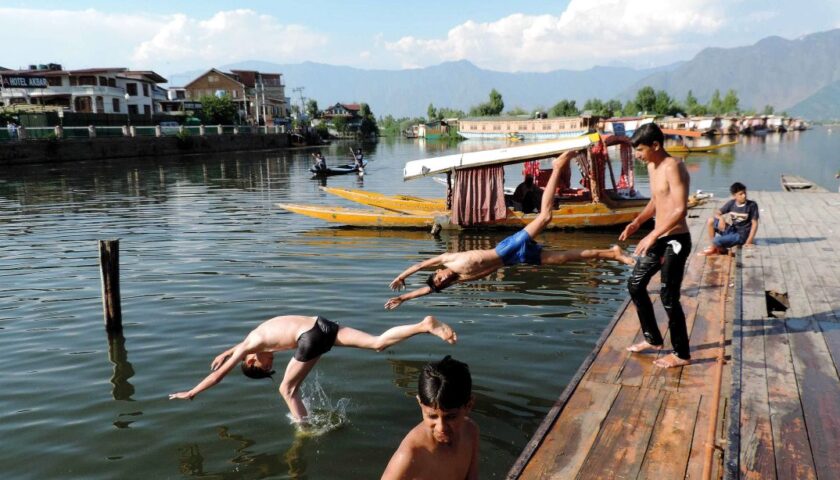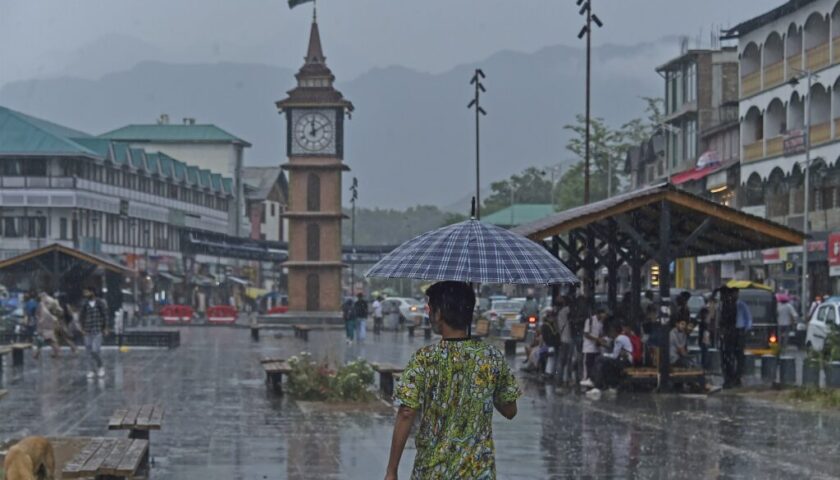As ripening paddy fields impart a magical golden-brown magnificence to the countryside, the soothing autumnal sun shines to confirm that the season of plenty has arrived in Kashmir – as an environmental disaster looms.
 From paddy, maize, apples, grapes and pears – all the yearly labour of local farmers and orchardists is readying to be harvested.
From paddy, maize, apples, grapes and pears – all the yearly labour of local farmers and orchardists is readying to be harvested.
“Almost all the marriages ceremonies in the past would be held after the harvesting period in the Valley,” Nisar Hussain, 64, a retired chief engineer, told IANS. “The poor farmer would get his return of the year’s labour and there would be enough food to serve the guests and relatives. As locals started businesses and other activities, the dependence on agriculture came down because of vanishing agriculture lands.
“Marriage functions are now held in any month of the year,” Hussain added.
Sadly, in all this, Kashmir’s biggest and unnoticed tragedy has been the unlawful conversion of agricultural land for non-agricultural purposes.
Under the existing laws, nobody can convert agriculture land for construction purposes like building houses, shopping malls or industries.
A cursory look at the north, south and central Kashmir areas of Anantnag, Pulwama, Kulgam, Badgam, Srinagar, Baramulla, Kupwara, Ganderbal and Bandipora districts shows how callous has been the nexus between the land mafia and the authorities.
“Land protected under the state laws exclusively for agricultural purposes is sold and gets converted into shopping complexes, residential houses and industrial workshops,” Abdul Salam, 59, a farmer in Anantnag district, lamented.
“The magnificent patches of golden-brown in the countryside today stand proof of the fact that vast stretches around these patches were agricultural fields till the other day,” Salam added.
Urbanization may have its advantages, but the price paid in terms of ecological devastation, environmental degradation and mindless expansion of towns and cities is something that can cost Kashmir its place of pride on the World map.
“There are hundreds of urbanized, industrialized and commercialized places in the world, but Kashmir owes its uniqueness and grandeur to its lakes, mountains, countryside, glaciers and meadows.
“All this is fast vanishing and so are the memories of the great bounties nature had bestowed the place with”, said Abdul Gani Mir, 56, who lives on the outskirts of Srinagar city that had vast and fabulously beautiful orchards, paddy fields and open land till some years back.
The area is fast being urbanized because people living in low lying areas of the city whose houses and properties were inundated last year by floods are on a land-buying spree in the highlands like Mir’s village.
The paradox of Kashmir became understandable when Mir’s neighbours said he had recently sold five areas of paddy land for over Rs.10 crore ($1.5 million).
“The land sold by Mir has been divided into plots by land brokers who bought it from Mir. “The plots are selling like hot cakes these days at exorbitant rates because people from Srinagar are buying these to build new homes away from the possibility of any future floods”, said a neighbour of Mir who did not want to be named.
The greed for modern day luxuries, including SUVs, centrally heated homes, modular kitchens, high-speed motor cycles for youngsters and electronic gadgets are proving to be too much to resist for the once-hardworking farmers of Kashmir.
“Agriculture has never been a profitable activity in Kashmir and, for that matter, nowhere else in India. Selling ancestral land to live a comfortable, hassle-free life is something the Kashmiri farmer is finding too difficult to resist.
“The skyrocketing land prices are likely to convert the entire Kashmir countryside into a monster of concrete,” rued Muhammad Shafi, 52, an orchardist in Baramulla district’s Sopore area.
Is Kashmir fast approaching a time when its lush green countryside turning golden brown in autumn, fruit-laden apple trees and scented saffron fields would be relegated to picture postcards for posterity?
Well, given the mad rush to sell and buy agricultural lands in the countryside proves this nightmare scenario is not too far away.






